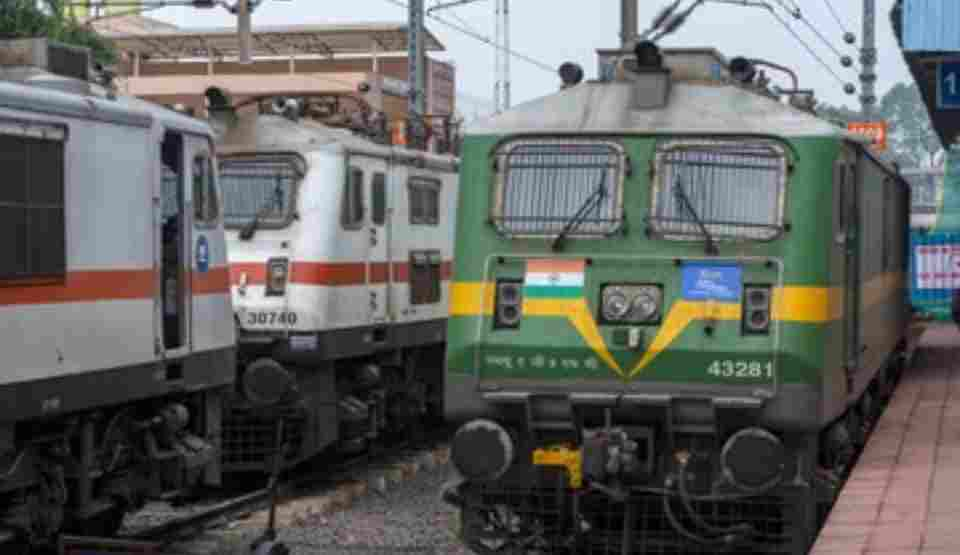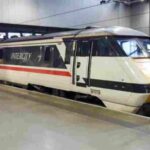Story by Naresh Patel for Tab2Mag
4 November 2025
From 34 Kilometres to 68,584: The Remarkable Story of India’s Lifeline
New Delhi — On a historic day in April 1853, three steam locomotives named Sahib, Sindh, and Sultan pulled 14 carriages carrying 400 passengers from Bombay to Thane, covering just 34 kilometres. This momentous journey marked the birth of Indian Railways, a network that would grow to become the lifeline of the nation and one of the world’s largest railway systems.
Today, 172 years later, Indian Railways operates an impressive 68,584-kilometre broad gauge network equipped with modern infrastructure including long-welded, high-tensile rails and pre-stressed concrete sleepers. The railway connects the farthest corners of India, carrying millions of passengers daily and moving goods across the length and breadth of the country.

Early Expansion: Connecting a Continent
The railway expansion was swift and strategic. By August 1854, Eastern India witnessed its first passenger train running 39 kilometres from Howrah near Kolkata to Hoogly. South India joined the railway revolution on July 1, 1856, when services began between Royapuram in Madras and Arcot.
Within three decades, by 1880, the network had exploded to approximately 15,000 kilometres, radiating inland from the three major port cities of Bombay, Madras, and Calcutta. This expansion was not merely about transportation; it was about nation-building, economic integration, and social transformation.
What Indian Railways Provides to the Nation
Indian Railways serves as much more than a transportation system. It is the economic backbone that keeps India moving:
Connectivity for All: The railways democratize travel, providing affordable transportation to hundreds of millions of citizens annually. From the daily commuter in Mumbai’s suburban trains to families traveling across states for festivals, Indian Railways remains the most accessible mode of long-distance travel.
Economic Engine: The freight network moves essential commodities including coal, steel, cement, food grains, and petroleum products. In fiscal year 2024-25, freight operations generated ₹1.8 lakh crore, accounting for 65% of total railway revenues. This logistics backbone supports industries and keeps supply chains functioning across the vast Indian subcontinent.
Employment Generator: Indian Railways is one of the world’s largest employers, providing livelihoods to over a million people and creating indirect employment opportunities across countless support industries.
National Integration: By physically connecting distant regions, the railways have played an invaluable role in fostering national unity and cultural exchange.
The Financial Reality: A Service or a Business?
However, the financial picture presents a complex challenge. Unlike commercial enterprises, Indian Railways operates with a dual mandate: providing affordable public service while attempting financial sustainability.
The Revenue Picture for 2024-25:
- Total internal revenue: ₹2.78 lakh crore
- Freight revenue: ₹1.80 lakh crore (65%)
- Passenger revenue: ₹80,000 crore (29%)
- Other sources: ₹18,500 crore (6%)

The Sustainability Challenge:
Here lies the critical issue: Indian Railways currently cannot generate sufficient surplus to finance its own capital expansion. In 2024-25, only 1% of capital expenditure will come from internal revenue. The remaining infrastructure development depends on government budgetary support (₹2.52 trillion) and extra-budgetary borrowings.
Rather than contributing revenue to the government treasury, Indian Railways receives substantial government funding. The Union Budget 2024-25 allocated a record ₹2.65 trillion for railway capital expenditure.
Is the Nation Happy? The Public Verdict
The answer is nuanced. Indian Railways successfully fulfills its primary mission of providing affordable mass transportation. Passenger fares remain heavily subsidized, making train travel accessible to India’s economically diverse population. This social objective brings immense value to citizens.
However, there are persistent challenges:
- Overcrowding on popular routes
- Safety concerns requiring constant vigilance
- Infrastructure maintenance backlogs
- Service quality gaps compared to international standards
- Need for faster trains and reduced journey times
The Road Ahead: How to Generate More Revenue
For Indian Railways to achieve financial sustainability without compromising its social mandate, several strategic approaches merit consideration:
1. Freight Optimization Indian Railways must compete more aggressively with road transport for high-value freight. Currently, railways handle primarily bulk commodities. Capturing containerized cargo and perishable goods could significantly boost revenues.
2. Premium Service Differentiation Introducing more Vande Bharat-style premium trains on high-demand routes allows revenue maximization from passengers willing to pay for speed and comfort, while maintaining affordable options for budget travelers.
3. Station Monetization Railway stations represent valuable real estate. Developing commercial complexes, advertising opportunities, and retail spaces can generate substantial non-fare revenue without affecting train operations.
4. Technology and Efficiency Implementing artificial intelligence for dynamic pricing, predictive maintenance to reduce breakdowns, and automated operations can reduce costs while improving service quality.
5. Public-Private Partnerships Selective partnerships for station development, train operations on specific routes, and freight corridor management could bring private capital and operational efficiency.
6. Reducing Operating Ratio Indian Railways must improve its operating ratio (operating expenses as a percentage of revenue). Currently, most revenue goes toward operational costs, leaving minimal surplus for growth. Energy efficiency, workforce optimization, and reducing leakages can improve this metric.
7. Value-Added Services Expanding services like onboard catering, Wi-Fi monetization, travel insurance, and integrated last-mile connectivity can create new revenue streams.
Balancing Act: Service vs. Sustainability
The fundamental question facing Indian Railways is philosophical as much as financial: Should it operate primarily as a social service or as a commercial entity?
Most developed nations heavily subsidize their railway systems, recognizing the broader economic and environmental benefits. The question is not whether Indian Railways should be profitable, but whether it can optimize operations to reduce the subsidy burden while continuing to serve the nation.
The Bottom Line
Indian Railways has traveled an extraordinary journey from that first 34-kilometre run in 1853 to becoming one of the world’s most extensive railway networks. It successfully provides affordable transportation and economic connectivity to over a billion people.
The financial challenge is real but not insurmountable. With strategic revenue enhancement, operational efficiency improvements, and smart infrastructure investments, Indian Railways can move toward greater financial sustainability while continuing to fulfill its vital social mission.
The nation’s happiness with Indian Railways depends not on profit margins but on safe, reliable, affordable connectivity. If Indian Railways can balance this social contract with improved financial health, it will continue to be the lifeline that binds India together for generations to come.
The journey that began with three steam engines and 400 passengers continues today with millions traveling daily across 68,584 kilometres of modern railway network—a testament to India’s progress and the enduring importance of this great national institution.






